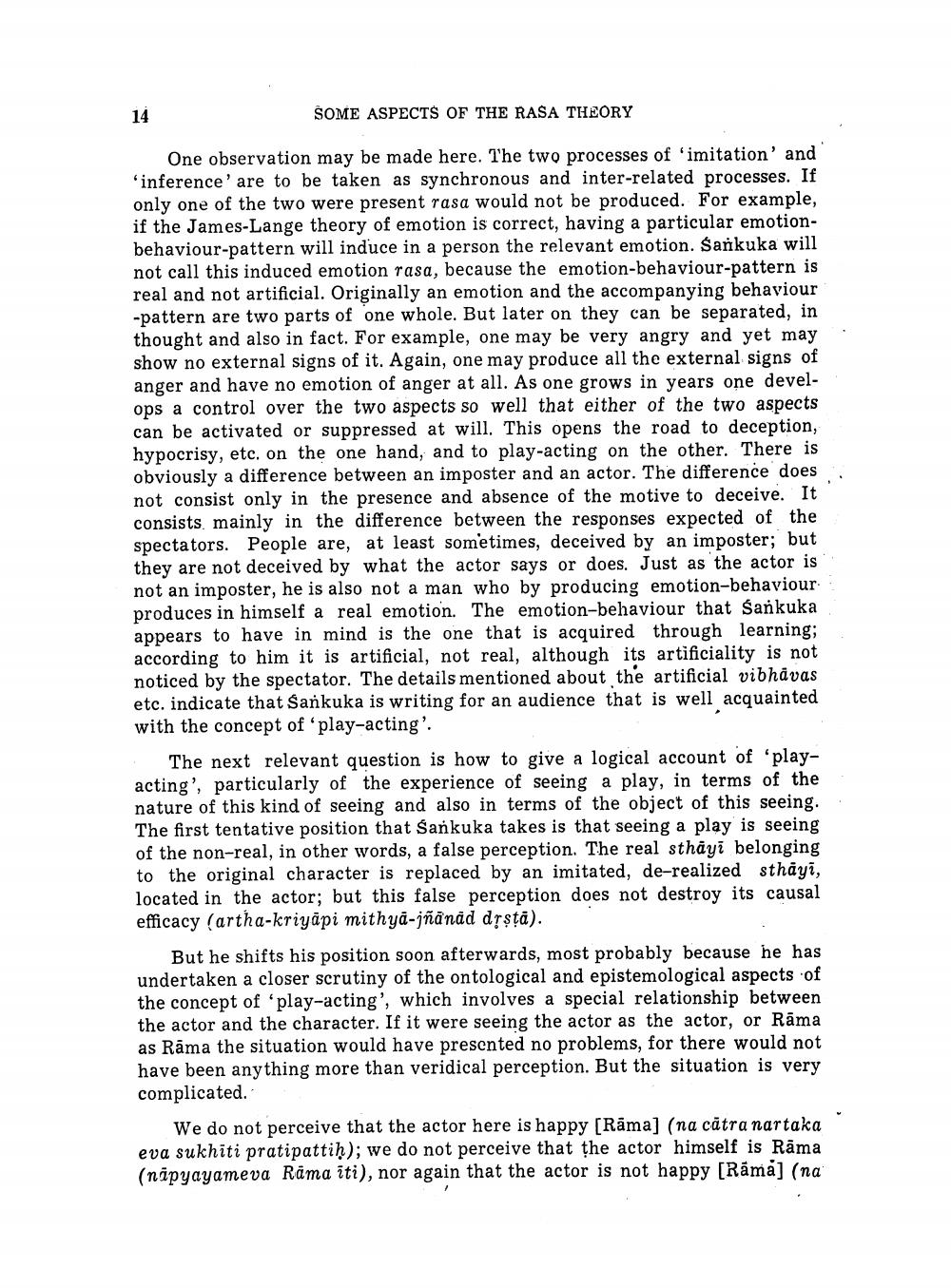________________
SOME ASPECTS OF THE RASA THEORY
One observation may be made here. The two processes of 'imitation' and 'inference' are to be taken as synchronous and inter-related processes. If only one of the two were present rasa would not be produced. For example, if the James-Lange theory of emotion is correct, having a particular emotionbehaviour-pattern will induce in a person the relevant emotion. Sankuka will not call this induced emotion rasa, because the emotion-behaviour-pattern is real and not artificial. Originally an emotion and the accompanying behaviour -pattern are two parts of one whole. But later on they can be separated, in thought and also in fact. For example, one may be very angry and yet may show no external signs of it. Again, one may produce all the external signs of anger and have no emotion of anger at all. As one grows in years one develops a control over the two aspects so well that either of the two aspects can be activated or suppressed at will. This opens the road to deception, hypocrisy, etc. on the one hand, and to play-acting on the other. There is obviously a difference between an imposter and an actor. The difference does not consist only in the presence and absence of the motive to deceive. It consists, mainly in the difference between the responses expected of the spectators. People are, at least sometimes, deceived by an imposter; but they are not deceived by what the actor says or does. Just as the actor is not an imposter, he is also not a man who by producing emotion-behaviour produces in himself a real emotion. The emotion-behaviour that Sankuka appears to have in mind is the one that is acquired through learning; according to him it is artificial, not real, although its artificiality is not noticed by the spectator. The details mentioned about the artificial vibhāvas etc. indicate that Sankuka is writing for an audience that is well acquainted with the concept of 'play-acting'.
The next relevant question is how to give a logical account of 'playacting', particularly of the experience of seeing a play, in terms of the nature of this kind of seeing and also in terms of the object of this seeing. The first tentative position that Sankuka takes is that seeing a play is seeing of the non-real, in other words, a false perception. The real sthāyi belonging to the original character is replaced by an imitated, de-realized sthāyī, located in the actor; but this false perception does not destroy its causal efficacy (artha-kriyāpi mithya-jñānād drstā).
But he shifts his position soon afterwards, most probably because he has undertaken a closer scrutiny of the ontological and epistemological aspects of the concept of 'play-acting', which involves a special relationship between the actor and the character. If it were seeing the actor as the actor, or Rāma as Rāma the situation would have presented no problems, for there would not have been anything more than veridical perception. But the situation is very complicated.
We do not perceive that the actor here is happy (Rāma] (na cătra nartaka eva sukhiti pratipattih); we do not perceive that the actor himself is Rāma (nipyayameva Rama iti), nor again that the actor is not happy [Rāma] (na




